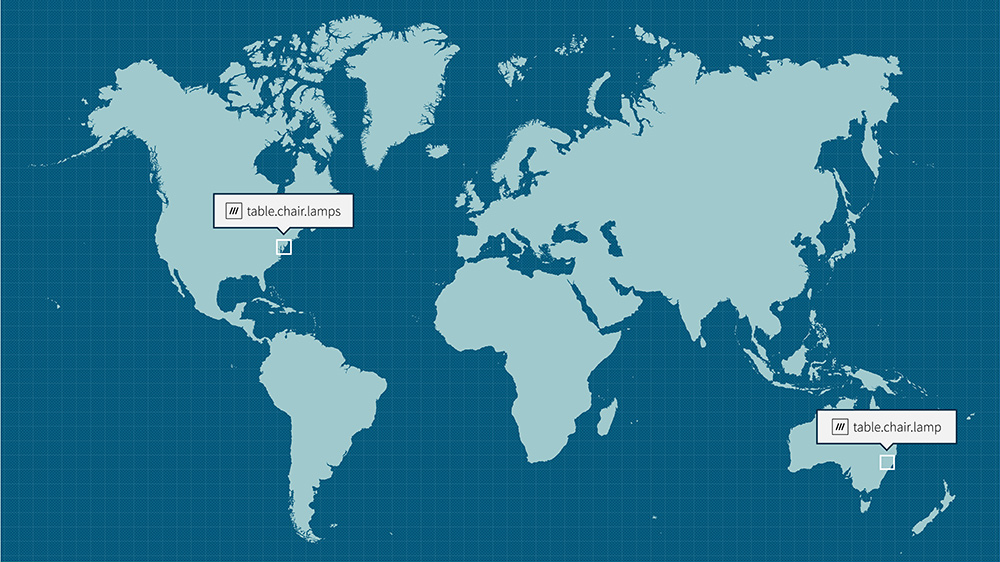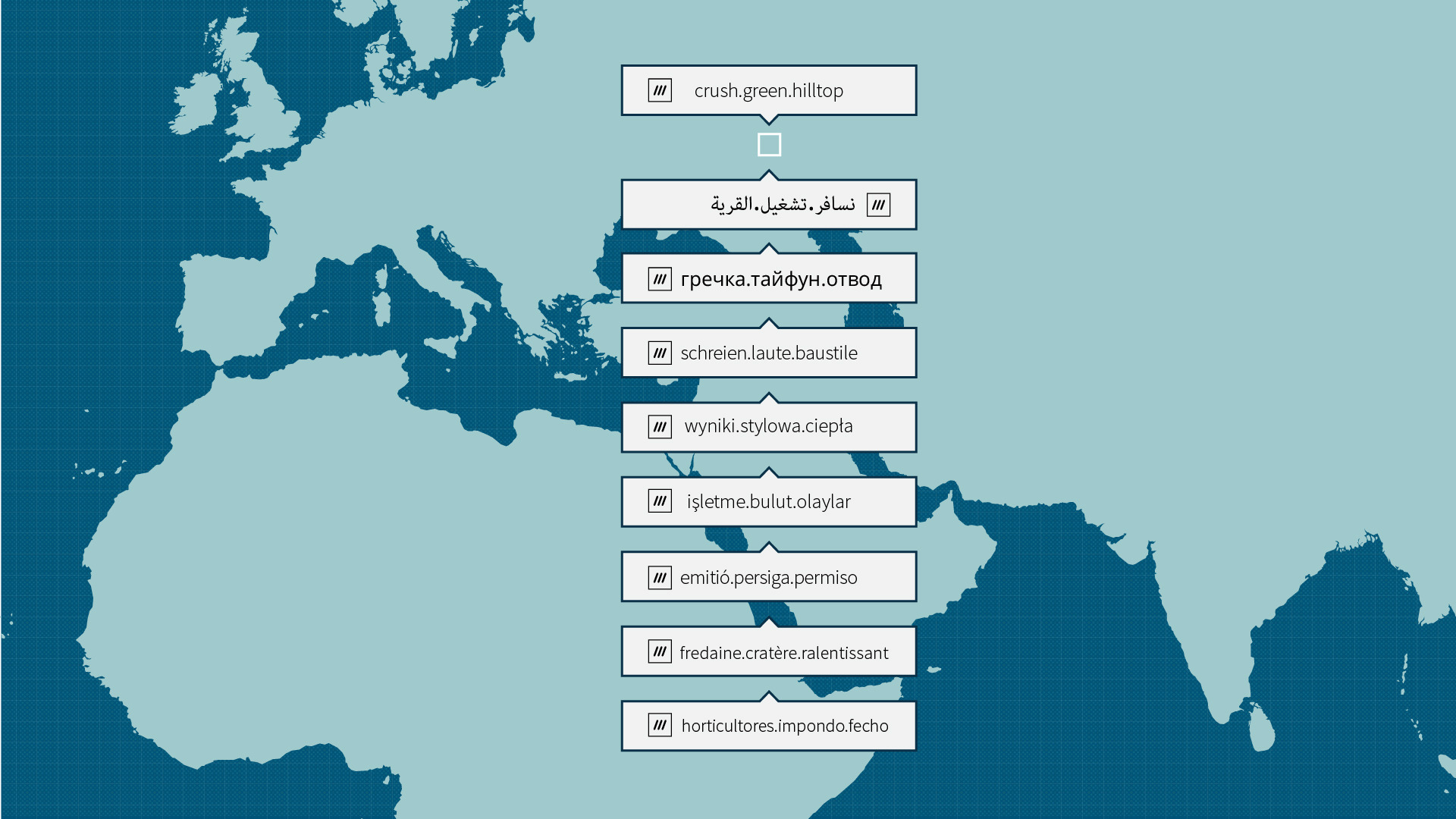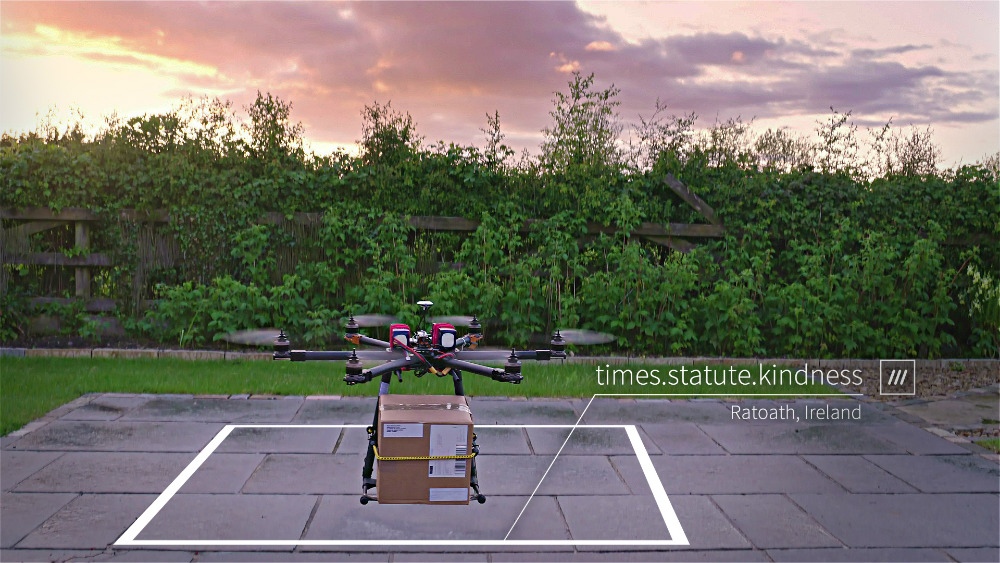
The only address system designed for voice GPS navigation
After a slow start, voice recognition technology is finally taking off at scale, with smartphone voice queries increasing, and voice-controlled home assistant devices like Amazon’s Alexa projected to be in 10 million households by the end of 2017. Voice, our most natural means of communication, can now be used to instruct our machines and devices whilst keeping our hands and eyes free to cook, exercise, drive safely, and do anything else that used to be awkwardly multitasked with typing and swiping.

But while Alexa and her voice-controlled contemporaries are expertly dictating Jamie Oliver recipes as we cook and playing Bruce Springsteen at full volume as we put our foot down on the motorway, they’re blissfully unaware of a major gap in their skill set: talking about location.
Addresses and voice just don’t work
Addresses weren’t designed with voice input in mind, and it shows. Whether you’re trying to give your in-car navigation unit a destination, or telling Alexa where to send your Amazon delivery, normal postal addresses just aren’t good enough for voice. This may sound odd, but let’s look at the facts:
1. Mistakes are easy to make and hard to spot. 15 Ammanford Road and 50 Ammanford Road are hard for a voice system to distinguish between, and just try directing your car by voice in Iceland and ensuring you end up at Laugavegur, not Laurgavegur like one unfortunate American tourist .
2. If you can’t pronounce the address, you’re out of luck. Street addresses use thousands of non-dictionary words, the pronunciation of which can be near impossible to guess. The town of Godmanchester, for example, looks simple enough, but is actually pronounced ‘Gumster’. Pronunciation issues make voice navigation with regular addresses pretty much impossible for foreign visitors to a country.
3. House names and road names aren’t unique. There are 14 different Church Roads in London, and an incredible 632 Juarez streets in Mexico City. To be sure that your car, your pizza or your new Ikea bookshelf get to the correct place, the entire lengthy address, including the postcode, must be dictated and understood correctly.
And what if there’s no address at all?
Then there are places with no addresses. Park benches, market stalls, the start of a hiking trail or a remote beachside car park — all the best places, really, have no address. And if you’re meeting a friend at one of these locations, it’s a case of inputting the nearest address you can find, then resorting to phone calls to find each other.

We’re increasingly expecting deliveries and services to these places too. With the on-demand delivery race hotting up, companies are scrambling to launch delivery ‘on the go’ and ‘anywhere’ in a bid to meet these expectations. Up until now, the only accurate way to describe any of these places to a voice system is by reading out 18-digit GPS coordinates, which are lengthy, hard to remember and error-prone. Hardly the simple, hands-free experience expected from voice. Luckily, there’s a better solution.

A global addressing system built for voice
When we were writing the algorithm behind the what3words addressing system, we found ourselves in a unique position. We knew voice technology was on the rise, so we were able to create, from the start, the world’s first addressing system specifically designed for voice.
We compiled our word list with voice at the forefront of our minds. It meant we set out to remove homophones; sail and sale, for example, are completely different words but indistinguishable to a voice recognition system. It meant that we developed an error-detection system that accounted for similar words like coffee and toffee, and also words that are related and therefore easily confused, such as stole and stolen, placing similar addresses thousands of miles apart to make any mistakes obvious to the user. Our system can also be clipped to only return results in a specific area or country, minimising mistakes even further.

We only used dictionary words, and we needed just 25,000 words for the entire land mass of the world. The system is available in 14 languages so far, meaning billions of people can use voice to input any 3 word address using their native tongue. This removes the majority of issues around pronunciation, as most words in our list will be familiar to our users.

Voice, addresses and the IoT
As the IoT gathers momentum, the sheer number and variety of connected devices available can cause over-complication and confusion as we try to input information into many different interfaces. Hence the rise of voice: it’s a common denominator for input that’s simple to use and easily built into any device, large or small.
In turn, 3 word addresses are ideal for for the IoT: simple, voice-ready addresses that allow humans to communicate precise locations to machines, which can then efficiently pass the information between themselves. They’re already integrated into drone technology, and are currently being built into connected cars and trialled in their futuristic cousins: autonomous vehicles. 3 word addresses are used around the world, across sectors including logistics, e-commerce, postal services, navigation, automotive, emergency services, and disaster response. Every one of these areas will be investing in IoT devices in the near future, and every one has a need to accurately communicate location.

Smart devices know where with a 3 word address
We’re working towards a future where you say 3 words to your home assistant, and a drone knows where to bring your grocery shopping; where a paramedic says 3 words to their ambulance and it knows where they need to be, and how best to get them there.

It’s estimated that by 2020, 34 billion devices will be connected – four devices for every person on earth at that time – and $6 trillion will have been invested in IoT solutions. At what3words, we’re excited to be working with forward-thinking and innovative companies, both large and small, to integrate 3 word addresses and voice technology with their existing systems, for a smarter future.
The first car with what3words navigation will launch next year thanks to Mercedes-Benz. Find out more .

